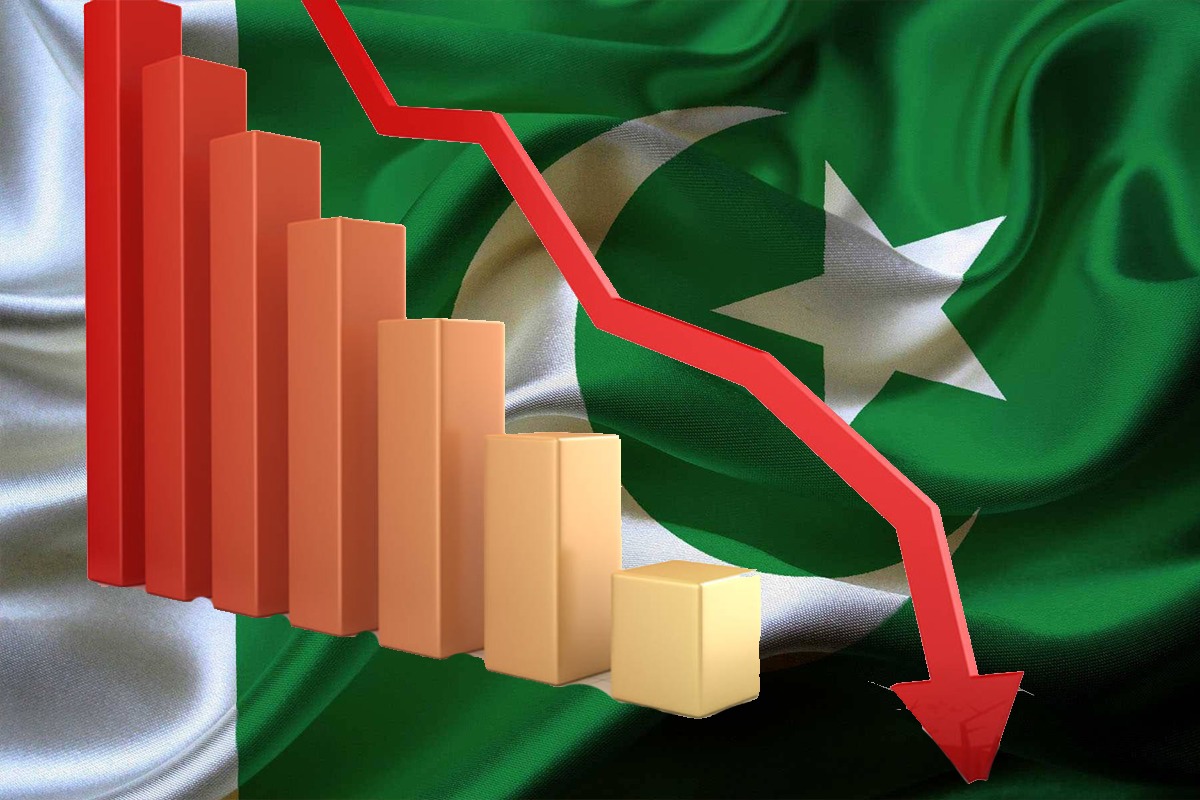
It is important for India to approach the situation with sensitivity, considering both the humanitarian aspects and national security concerns.

An exodus is underway in the subcontinent, with Pakistan leading the way. Many individuals holding Pakistani passports are eager to leave the country. The current exchange rate for the US dollar in hard cash is 334 Pakistani Rupees, reflecting the street value. However, the banks are offering a rate of 300 Rupees per dollar, although there is a scarcity of dollars in circulation.
Individuals who are leaving Pakistan are finding ways to move their money out, resorting to methods such as online shopping using credit cards. In response to this situation, the Indian government has hastily implemented a 20% tax on Indian credit cards, aiming to curb outflows. The Pakistani market is facing a shortage of foreign currency due to the high demand from Pakistani citizens seeking foreign money.
Serious concerns regarding a potential currency collapse are prevalent. As a result, India took sudden action by withdrawing 2000 Rupee notes. Additionally, there is a significant influx of religious travelers, particularly those embarking on the Hajj pilgrimage, which further strains the Pakistani economy in terms of foreign exchange. Furthermore, food shortages have become an additional challenge, necessitating external assistance for solutions.
READ MORE: Pakistan Economic Crisis: PM Shahbaz Sharif makes last-ditch effort to secure IMF deal
Significant quantities of food and fuel are being illicitly transported across the Iranian border, with the smugglers showing no interest in Pakistani currency and instead seeking US dollars.
Weapons sales to Ukraine have been generating valuable foreign exchange for Pakistan. However, there have been instances where the Pakistani foreign ministry has found itself in embarrassing situations during meetings with its Russian counterpart. In one such instance, a statement was made admitting that Pakistan is not as powerful as Russia.
These actions could be seen as a provocative gesture towards the United States. It is worth noting that Pakistan has been fortunate to receive support from the International Monetary Fund (IMF) on numerous occasions, having benefited from over 22 IMF programs. However, it is important to understand the context behind these programs. Pakistan received financial assistance from the USA as war capital, totaling over 6.5 billion USD, primarily to combat the Russians initially and later the Taliban.
Although this money has grown substantially over time, it currently holds little significance in addressing Pakistan’s overall financial challenges. The country’s external debt exceeds 140 billion dollars, with some estimates suggesting even higher figures. Additionally, there is a considerable domestic debt estimated to be around 100 billion dollars.
Altogether, these debts account for nearly 90% of Pakistan’s GDP. Compounding the situation, Pakistan is grappling with a high inflation rate of 34%. Given these circumstances, Pakistan finds itself in a precarious position with limited resources to repay its lenders.
It is quite possible that persistent inflation might render the Pakistani rupee redundant. People already don’t have a choice; most are shifting their transactions to other currencies, tired of being given the short shrift. This phenomenon explains the frantic rush to hoard whatever currency the impoverished Pakistanis can lay their hands on or, alternatively, to leave the country while they still have the chance.
Americans have become more astute and are seeking private lenders to fund Pakistan’s external debt, as the previously relied-upon institutions of America’s celebrated freedom and democracy project, namely the IMF and the World Bank, have been exhausted. Some estimates put private debt in Pakistan at 38% of its total debt. Private lenders do not care about the source of the money; if repayment is not made, they initiate sales or liens on national assets, akin to the Chinese approach. In fact, China could easily exert significant influence over Pakistan.
The situation in Pakistan appears challenging as they continue to roll over their debt without making significant progress. Pakistan’s current stance presents a stiff challenge to lenders. Given these realities, a currency collapse seems inevitable, which would render the Pakistani Rupee worthless. In such a scenario, the risk of civil unrest and potential conflicts looms large. The Taliban, sensing the weakness of the Pakistani government, might exploit the situation and attempt to take over Pashtun areas.
Additionally, the Baloch community has been waiting in the wings for many years, further complicating the landscape. The Pakistani army is entangled in confrontations with politicians, which could lead to a removal of any remaining semblance of democratic governance if the army were to seize control.
However, the United States would likely expose this move, as they have become less supportive of the Pakistani military, especially after Imran Khan’s tenure. Adding to these challenges, Pakistan has committed to paying over 25 billion dollars of its debt in the coming year. If the Pakistani rupee continues to depreciate, the debt burden will only escalate.
The source of funding for such obligations remains uncertain, and Pakistan faces the imminent threat of national collapse. Furthermore, the country suffered from severe floods last year, leading to widespread food shortages. The restoration of normalcy is expected to consume a significant portion of their GDP. Electricity shortages persist, resulting in frequent power outages, and queues for essential items such as petrol, gas, diesel, and other necessities are common. The IMF has imposed a high Goods and Services Tax (GST) of 18% or more, which many people fail to pay.
Considering the potential disaster that could strike at any moment, it becomes crucial to evaluate the regional dynamics. In light of these circumstances, it would be prudent for India to limit its exports to Pakistan, focusing primarily on supplying essential food items.
Exploring barter arrangements for Pakistan’s natural resources, similar to what the Chinese frequently do, could be a viable approach. This strategy aims to maintain a certain distance from Pakistan while also mitigating the risk of a refugee crisis. Taking a humanitarian perspective, such measures can be seen as the most responsible course of action.
You May Also Like: